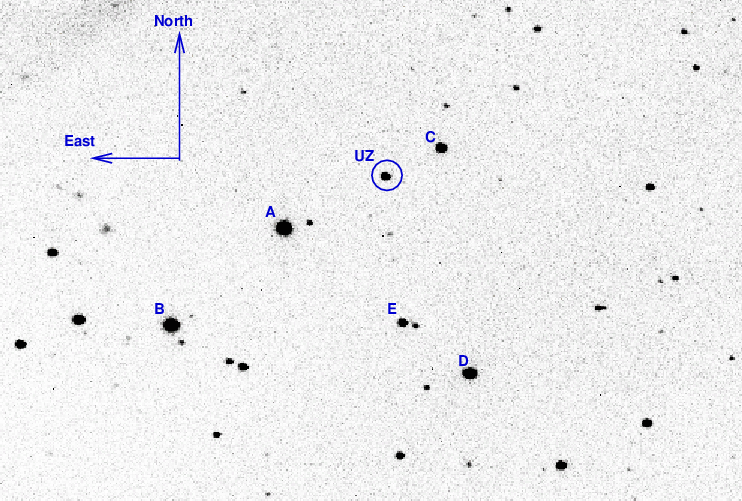
On the night of Aug 18/19, 2013, I observed UZ Boo. Conditions were bad: persistent broken clouds and a bright gibbous moon. These measurements are poor quality, but probably do show that UZ Boo was fading over the course of several hours.
The main setup was:
Notes from the night
I took a series of images of UZ Boo, using a 120-second exposure time.

The zero-point offset graph shows clouds causing variations of about 1 mag over 10-20 minutes. Ugh. The first half of my run wasn't terrible, but the second half was really bad.
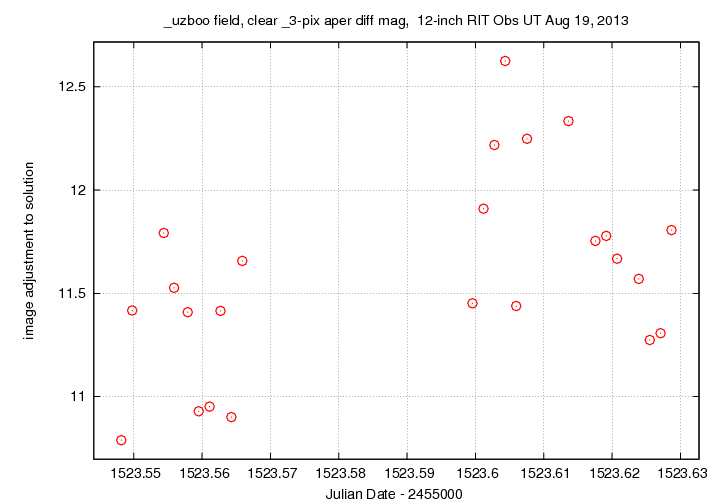
I measured UZ Boo and many other stars in the field. The bright stars "A", "B" and "D" were somewhat saturated, so I left them out of the ensemble solution. Instead of the star "A", I used the star "E" = UCAC4 561-055129 = AAVSO 000-BBV-649 to shift the instrumental magnitudes to the standard scale. Remember, the measurements are made without a filter , but I'll shift them to match the V-band scale: 000-BBV-649 has mag V = 14.267 according to the AAVSO chart 12447AMF.
Because the sky was so bright, I used a smaller aperture to measure the stars than usual: radius of 3 pixels (5.6 arcsec) instead of 4 pixels (7.4 arcsec).
Below are light curves for UZ Boo and several of the unsaturated stars in the field:
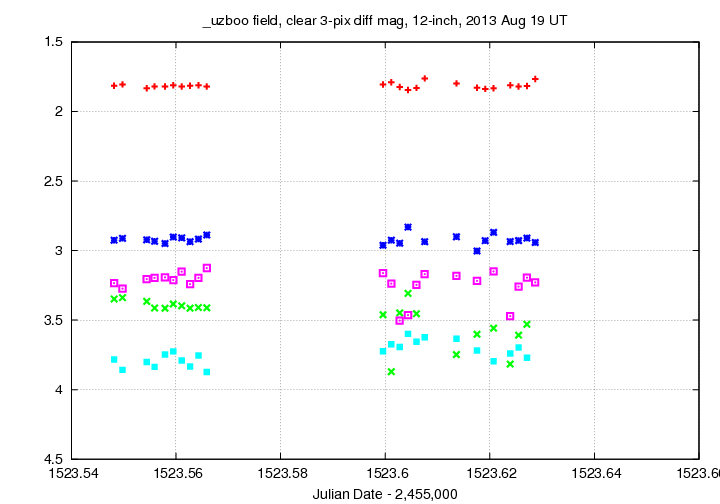
Here's a closeup of UZ Boo and stars of similar faintness. The scatter is higher in the second half of the run, but I can conclude that UZ Boo was fading.
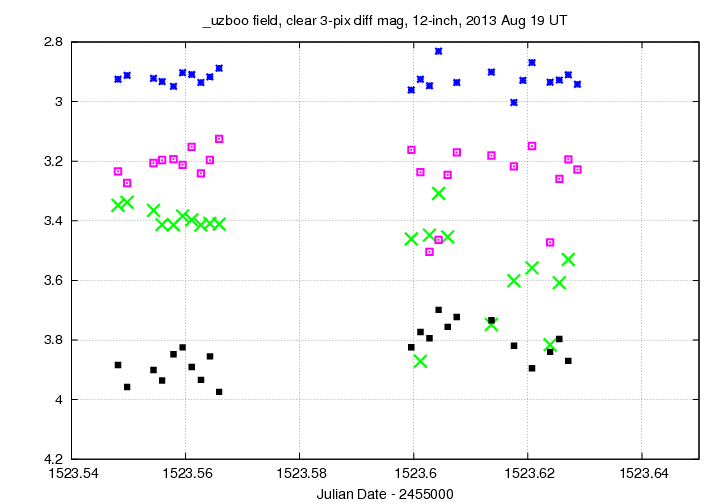
The variable star has entered a phase in its evolution in which it fades by about 2 mag, then rebrightens, then fades again, then rebrightens, etc. My measurements at the RIT Observatory catch UZ Boo at several places in this complicated evolution; tonight, it was fading again.
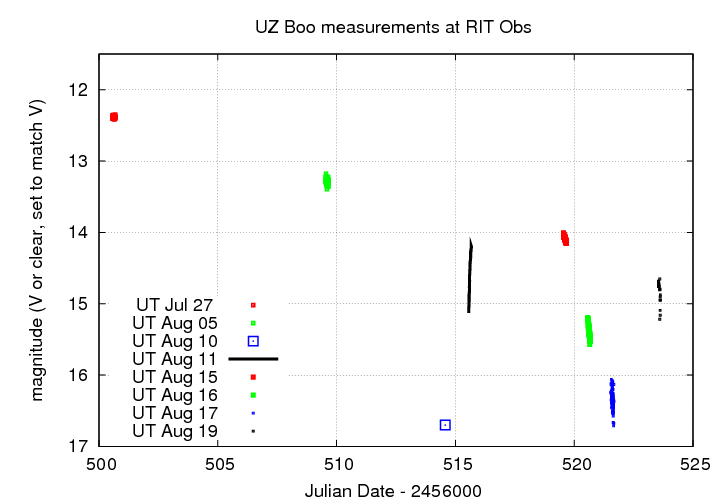
Below are the first few lines of the report I've sent to the AAVSO and VSNet.
# Measurements of UZ_Boo made at RIT Obs, Aug 19, 2013 UT, # in bad conditions, # by Michael Richmond, using 12-inch Meade and SBIG ST-8E CCD. # Exposures 120 seconds long, clear filter. # Tabulated times are midexposure (FITS header time - half exposure length) # and accurate only to +/- 1 second (??). # 'mag' is a differential magnitude based on ensemble photometry # using a circular aperture of radius 5.6 arcseconds. # which has been shifted so UCAC4 561-055129 has mag=14.267 # which is its V-band magnitude according to AAVSO. # # UT_day JD HJD mag uncert Aug19.04817 2456523.54817 2456523.54611 14.694 0.048 Aug19.04977 2456523.54977 2456523.54771 14.684 0.048 Aug19.05439 2456523.55439 2456523.55233 14.711 0.049
Last modified 08/19/2013 by MWR.